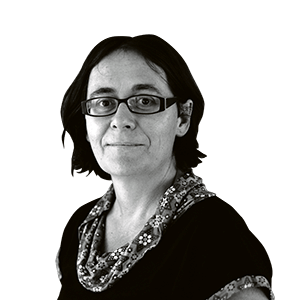Filling the city with murals to build community
An urban art festival in Sant Andreu de la Barca aims to reclaim spaces and at the same time strengthen the neighborhood's identity.


Saint Andrew of the BoatIf all goes well during this Saint John's Eve festival, San Andrés de la Barca will purify evil spirits with bonfires and will also debut the giant murals that seven artists are currently painting in different parts of this town in Baix Llobregat. The goal is not only to have an aesthetic impact on the party walls where the muralists are working, but the idea is to "recover and reclaim local identity" through art, explains Ramon Ferrer, Culture Technician at the City Council.
The initiative is part of the first edition of the Kromático Festival, which was born with the desire to have continuity and place the municipality on the tourist route of urban murals that are making a fortune outside the big cities, as is the case of PenellesThe artists were chosen through a competition of ideas and by direct designation, based on their careers and themes. These were Lula Goce, Roque Blackblock, They stain, Dan Ferrer, Felipe Pincel, Irene López León and Oriole B:K Garreta. Each one has put forward a proposal adapted to the space so that the mural "dialogues" with its surroundings and the history of the municipality, and directly addresses the residents, Ferrer continues.
One of the first to climb the cranes to climb the walls and begin to capture her proposal has been the Galician Lula Goce, with an extensive international career, who describes how, with her goddess surrounded by plant elements, she seeks to "help raise awareness about environmental issues." The figure, located on a wall next to the old N-II, which crosses the town, symbolizes "nature, femininity, and strength." While she paints, a pedestrian is surprised by the installation: "What a change it will be to see art instead of an ugly white wall." It always encourages." In this sense, the artist is convinced of the benefits of muralism in helping to "create community and love for the neighborhood" because - he maintains - citizens "also value aesthetics" in their daily experience. And it is with this staging that residents want to keep the streets and spaces cleaner and tidier.
Immigration of Now and Then
Across the road, in the small historic center of Sant Andreu de la Barca, the organizers have reserved two walls for two artistic works closely related to local historical memory. On one side, next to the church, Barcelona native Roc Blackblock is preparing to begin the mural dedicated to the now-defunct lever used by residents to cross the Llobregat River. The artist admits it wasn't his first idea, but upon hearing the nostalgia with which older residents remember the old bridge, he wanted to reproduce an old photograph of the footbridge. In this way, the muralist explains, he maintains the theme of his work, based on historical memory and collective identity. "This isn't just about making it pretty; it's about remembering, connecting generations, giving value to what is part of a town's identity," he argues, and he hopes that the older residents who saw the lever in operation will explain to the younger residents the service it provided, as if "they were a link in the chain of transmitting memory."
A few meters away, Felipe Pincel's art will be displayed in the form of a mother with two children sitting on suitcases. This proposal is not gratuitous, as it is located in one of the neighborhoods that welcomed Spanish immigrants in the 1960s and 1970s, attracted by the region's industry and where residents from abroad have now settled. Ferrer emphasizes that the intention is to recognize all those who have made Sant Andreu de la Barca grow.
